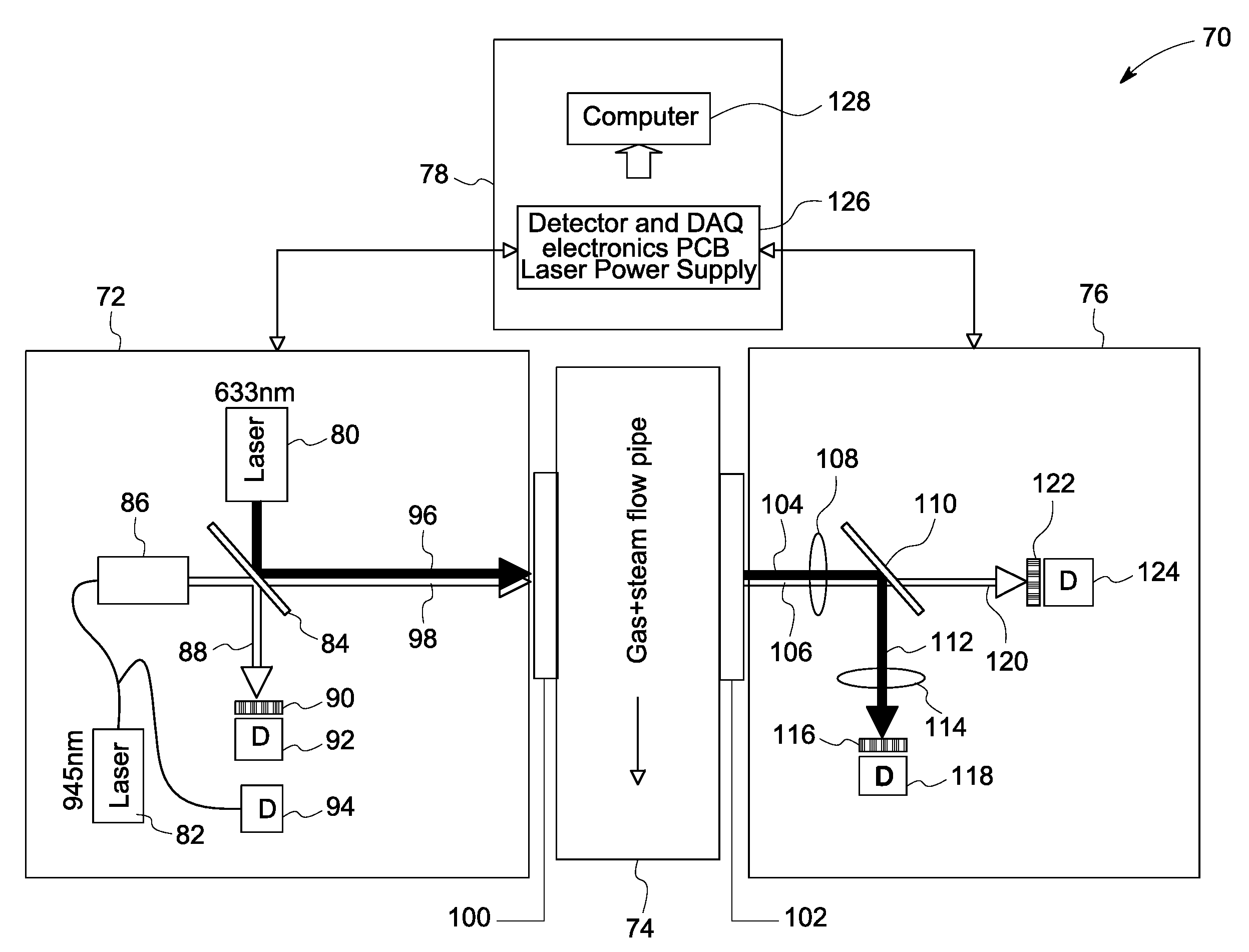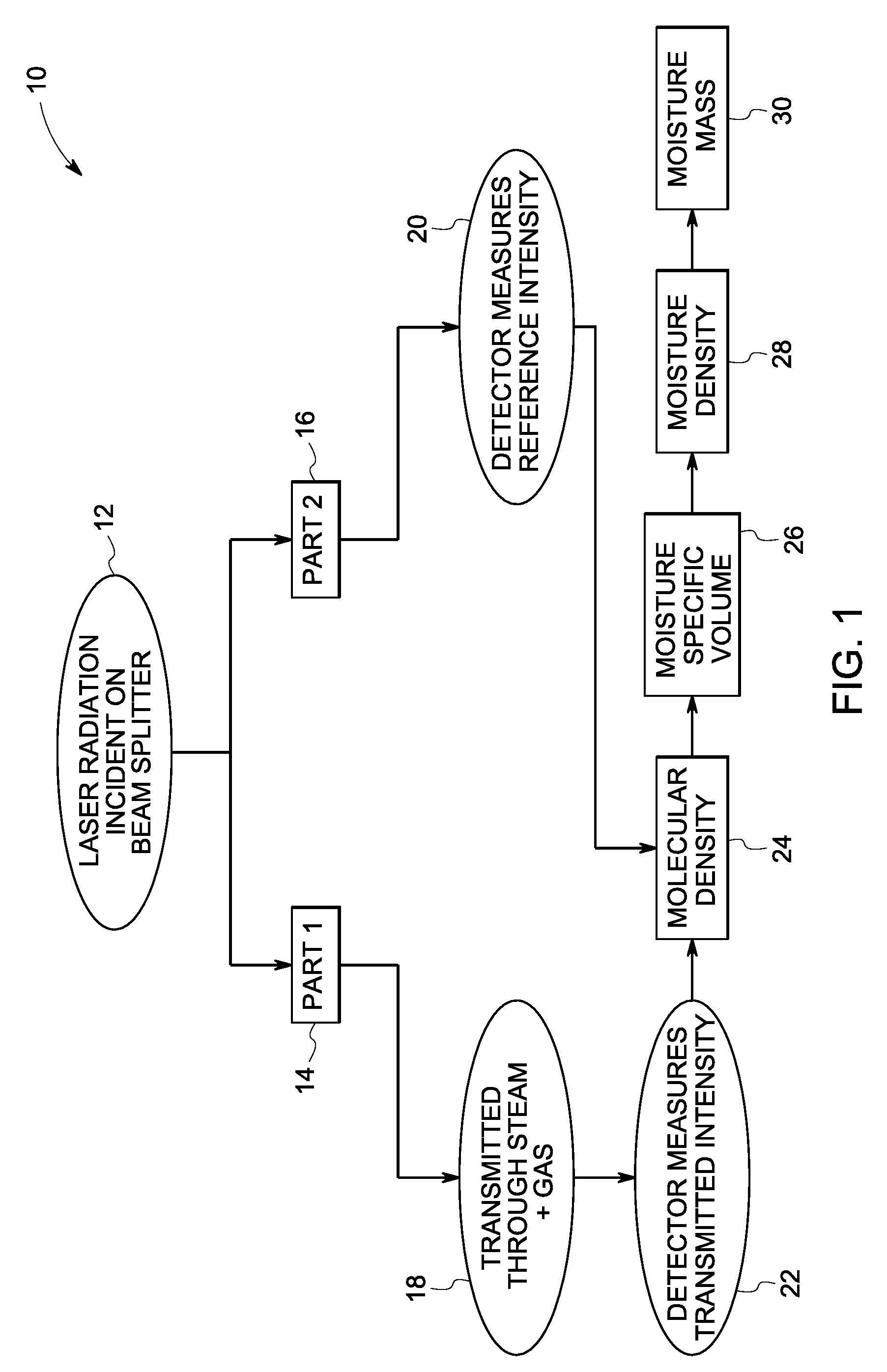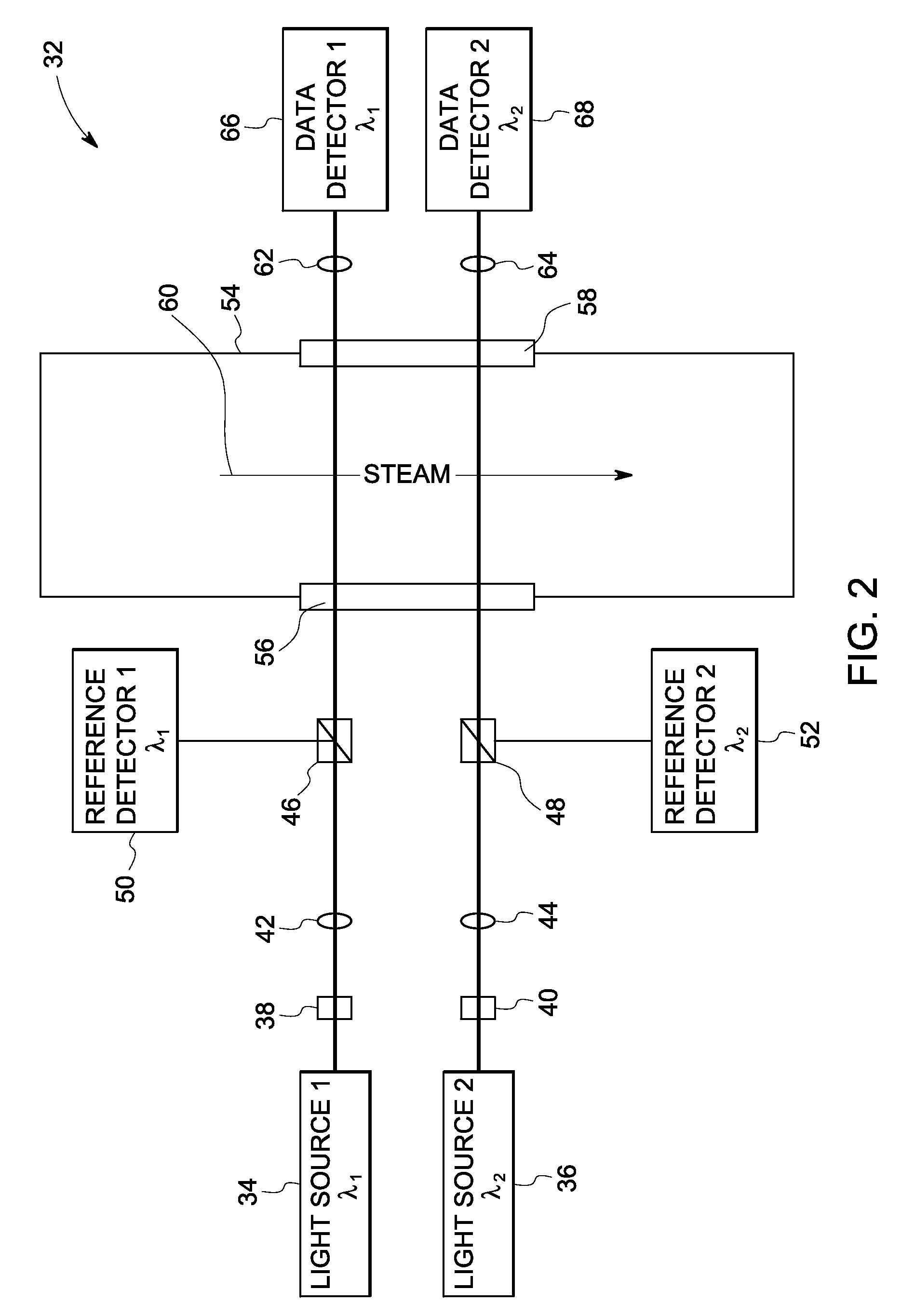System and method for sensing fuel moisturization
a fuel moisturization and sensing technology, applied in the field of monitoring and measuring fuel moisturization levels, can solve the problems of introducing a large error in the estimation of moisture content, the supply of moisturized fuel to a dln gas turbine combustion system requires extremely tight control of the fuel saturation process, and the depletion of plant performance, so as to achieve accurate measurement of on-line moisture content
- Summary
- Abstract
- Description
- Claims
- Application Information
AI Technical Summary
Benefits of technology
Problems solved by technology
Method used
Image
Examples
example 1
[0061]The vessel was evacuated and filled with nitrogen up to a desired pressure. A data acquisition system acquiring the data from the moisturization sensor system was initiated and the transmitted and reference intensities were monitored. Steam was introduced in the vessel and the transmitted and reference intensities were monitored. FIG. 8 illustrates the variation of transmitted intensity through N2 at 55 psi (˜379 kPa) and steam at 10 psi (˜68 kPa).
[0062]The absorption feature of light at 945 nm in FIG. 8 shows that as the steam was introduced inside the chamber at point 189, there was a drop 190 in the transmitted intensity till a steady state was attained again at and beyond point 191. Line 192 marks the baseline intensity level.
[0063]The steam mass was measured at different steam and N2 pressures. The results were validated using thermodynamic table based calculations and pressure, volume, and temperature (P, V, T) based calculations. For thermodynamic table based calculatio...
example 2
[0065]The vessel was evacuated and filled with carbon dioxide up to a desired pressure. A data acquisition system acquiring the data from the moisturization sensor system was initiated and the transmitted and reference intensities were monitored. Steam was introduced in the vessel and the transmitted and reference intensities were continued to be monitored. FIG. 9 illustrates the variation of transmitted intensity through CO2 at 30 psi (˜207 kPa) and steam at 10 psi (˜68 kPa).
[0066]Line 202 marks the baseline intensity level. The absorption feature of light at 945 nm in FIG. 9 shows that as the steam was introduced inside the chamber at point 204, there was a drop 200 in the transmitted intensity till a steady state was attained again in the region 206. The DC shift due to absorption of 10 psi (68 kPa). steam in the steam+CO2 mixture is indicated in the FIG. 9. This DC shift in the absorption spectra is used to calculate the steam mass in the gas mixtures.
[0067]In one embodiment, th...
PUM
 Login to View More
Login to View More Abstract
Description
Claims
Application Information
 Login to View More
Login to View More - R&D
- Intellectual Property
- Life Sciences
- Materials
- Tech Scout
- Unparalleled Data Quality
- Higher Quality Content
- 60% Fewer Hallucinations
Browse by: Latest US Patents, China's latest patents, Technical Efficacy Thesaurus, Application Domain, Technology Topic, Popular Technical Reports.
© 2025 PatSnap. All rights reserved.Legal|Privacy policy|Modern Slavery Act Transparency Statement|Sitemap|About US| Contact US: help@patsnap.com



